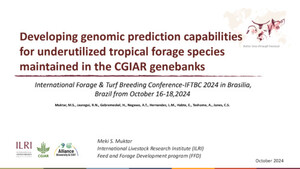
Lignocellulose degradation by rumen bacterial communities: New insights from metagenome analyses
Abstract
Ruminant animals house a dense and diverse community of microorganisms in their rumen, an enlarged compartment in their stomach, which provides a supportive environment for the storage and microbial fermentation of ingested feeds dominated by plant materials. The rumen microbiota has acquired diverse and functionally overlapped enzymes for the degradation of plant cell wall polysaccharides. In rumen Bacteroidetes, enzymes involved in degradation are clustered into polysaccharide utilization loci to facilitate coordinated expression when target polysaccharides are available. Firmicutes use free enzymes and cellulosomes to degrade the polysaccharides. Fibrobacters either aggregate lignocellulose-degrading enzymes on their cell surface or release them into the extracellular medium in membrane vesicles, a mechanism that has proven extremely effective in the breakdown of recalcitrant cellulose. Based on current metagenomic analyses, rumen Bacteroidetes and Firmicutes are categorized as generalist microbes that can degrade a wide range of polysaccharides, while other members adapted toward specific polysaccharides. Particularly, there is ample evidence that Verrucomicrobia and Spirochaetes have evolved enzyme systems for the breakdown of complex polysaccharides such as xyloglucans, peptidoglycans, and pectin. It is concluded that diversity in degradation mechanisms is required to ensure that every component in feeds is efficiently degraded, which is key to harvesting maximum energy by host animals.
Citation
Gharechahi, J., Vahidi, M.F., Sharifi, G., Ariaeenejad, S., Xue-Zhi Ding, Jian-Lin Han and Salekdeh, G.H. 2023. Lignocellulose degradation by rumen bacterial communities: New insights from metagenome analyses. Environmental Research 229: 115925









